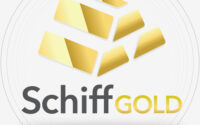China’s Inflation Warning Raises Bar for Further PBOC Easing
(Bloomberg) — The People’s Bank of China said it will safeguard the economy against inflation threats, pledging to avoid massive stimulus and excessive money printing to spur growth.
Most Read from Bloomberg
The central bank will both support economic growth and ensure stable prices, the PBOC said in its quarterly monetary policy report released Wednesday. At the same time, it will provide stronger and higher-quality support to the real economy, it said.
“Structural inflation pressure may increase in the short term, and the pressure of imported inflation remains,” the PBOC said. “We can’t lower our guards easily.”
The PBOC’s warnings came on the same day official data showed inflation accelerated in July to 2.7%, the highest level in two years, largely driven by food prices as pork costs surged. Weak consumer demand kept overall price pressures in check, though.
The central bank said consumer inflation will likely exceed 3% in some months during the second half of the year. However, China will likely achieve the target of keeping full-year inflation around 3% in 2022, thanks to measures taken to ensure grain and energy supply as well as a prudent monetary policy, it said.
Economists said while the PBOC’s warnings didn’t signal a tightening in monetary policy, there’s little scope for significant easing in coming months. Goldman Sachs Group Inc. said the report’s focus on near-term inflationary pressures and how it’s implementing policy indicates the PBOC is likely to continue with its stance toward low-profile, accommodative monetary policy.
The PBOC will likely keep its overall reserve requirement ratio and policy interest rates unchanged, the Goldman economists said, adding that the central bank will instead favor targeted tools such as its relending programs, or rely on policy banks to boost lending and support credit growth.
Read More: PBOC’s Inflation Warning Poses Risk to Bond Bulls: China Today
Qin Tai, chief macro analyst at Shenwan Hongyuan Group Co., said the PBOC’s pledge to “not over-issue money” implies it thinks the current supply of liquidity is already sufficient, reducing the need for RRR or interest rate cuts for the rest of this year.
The central bank said Wednesday factors that have contained inflation over the past two decades, such as globalization, have reversed, and the recovery in domestic consumption may accelerate the transmission of factory inflation to consumers. The pickup of pork prices and China’s reliance on imported gas and oil also created challenges, it said.
What Bloomberg Economics Says…
Inflation risks are certainly back on the PBOC’s radar. They are hard to ignore given soaring inflation in trading partners and the potential for an upturn in pork prices to lift China’s CPI readings ahead. But these risks won’t translate into an inflation problem — strip out food prices and CPI inflation remains soft (and looks set to stay that way). What’s more, factory-gate inflation is retreating — restraining underlying price pressures.
David Qu and Chang Shu
For the full report, click here.
Soaring inflation in the US and Europe is a lesson for China’s macroeconomic policies, the PBOC said. Maintaining a stable currency is the primary responsibility of a central bank, and keeping stable inflation is key, it said.
Policy easing is also being complicated by rising interest rates in the US and elsewhere. Acknowledging the tightening in monetary policy globally, the PBOC said its unchanged policy interest rates in the second quarter have “helped maintain internal and external balance against the backdrop of interest rate hikes by major global central banks.”
The central bank also signaled more flexibility around its credit growth goals. It said it will maintain “reasonable growth” of money supply and credit, a change from its previous stance to match the credit growth rate with nominal GDP expansion. It also omitted its usual pledge to keep the ratio of debt-to-gross domestic product stable, and vowed to increase credit support to companies.
Credit growth “may be unlikely to have a strong rebound like it did in 2020” under the restriction of preventing inflation and avoiding huge stimulus, GF Securities analysts wrote in a note. The PBOC’s repeated mentioning of the increased policy bank funding to infrastructure means it will be an important driver for credit, they said.
In a special section in the report, the PBOC highlighted improvement in the structure of outstanding loans in recent years, with the share of lending to small business increasing while that of property loans declined.
The central bank said it’s natural that credit growth may moderate as the economy goes through a transition period where urbanization and the property sector slows, adding that financial support to the economy will continue to be strong as new sectors such as green investment begin to accelerate.
(Updates with economist comments.)
Most Read from Bloomberg Businessweek
©2022 Bloomberg L.P.
[ad_2]
Source link


